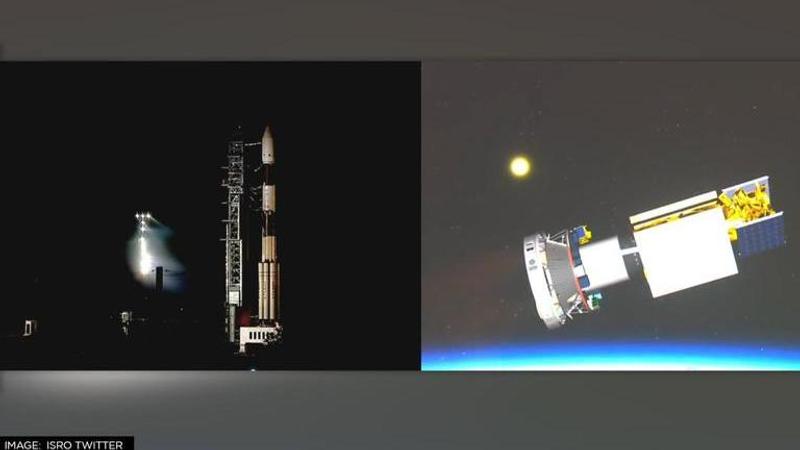Published 07:09 IST, February 14th 2022
ISRO successfully launches PSLV-C52 carrying 'Earth Observation' & 2 other satellites
The Indian Space Research Organisation's (ISRO) PSLV-C52 has been successfully launched in the wee hours of Monday from Sriharikota in Andhra Pradesh.

The Indian Space Research Organisation's (ISRO) PSLV-C52 has been successfully launched in the wee hours of Monday from Sriharikota in Andhra Pradesh. The Polar Satellite Launch Vehicle carrying the Earth Observation Satellite (EOS-04) along with two other co-passenger satellites was launched at 5.59 a.m. from the first launch pad of Satish Dhawan Space Centre in Sriharikota at the end of its 25-hour countdown that began yesterday.
This also marked the space agency's first mission launch in 2022 followed by the 54th flight of PSLV and the 23rd flight of PSLV in XL configuration.
The launch vehicle injected the Earth Observation Satellite into its intended orbit at 6.17 a.m.
Meanwhile, ISRO chairman S Somanath also congratulated the team for the precision with which the mission was accomplished successfully. The satellite which has been realised at the U R Rao Satellite Centre is a radar imaging satellite designed to provide high-quality images on all weather conditions for applications in various sectors and has carried two other small satellites, a student satellite (INSPIREsat-1) and a technology demonstrator satellite (INS-2TD).
The PSLV-C52 launch
The PSLV-C52 has been designed to orbit an earth observation satellite (EOS-04) which weighs around 1710 kg into a sun-synchronous orbit of 529 km. The mission will also carry two other satellites as its co-passengers which will include one student satellite (INSPIREsat-1) from the Indian Institute of Space Science and Technology and a technology demonstrator satellite (INS-2TD) from ISRO.
Notably, the earth observation satellite or EOS-04 is a radar imaging satellite designed to provide high-quality images under all weather conditions to be applicable on various fields including Agriculture, Forestry & Plantations, Soil Moisture & Hydrology, and Flood mapping.
Meanwhile, the two other scientific payloads installed in the satellite will help in improving the understanding of ionosphere dynamics and the sun's coronal heating processes.
Speaking about the first one, the first INSPIREsat-1 of the Indian Institute of Space Science and Technology (IIST) has been in association with the Laboratory of Atmospheric and Space Physics at the University of Colorado, Boulder and is a contribution by NTU, Singapore, and NCU, Taiwan.
While the other one is a technology demonstrator satellite (INS-2TD) from ISRO, which is a precursor to the India-Bhutan Joint Satellite (INS-2B). It has a thermal imaging camera as its payload and the satellite will benefit in the assessment of land surface temperature, water surface temperature of wetland or lakes, delineation of vegetation (crops and forest), and thermal inertia (day and night).
Image: Twitter/@ISRO
Updated 12:57 IST, February 14th 2022



